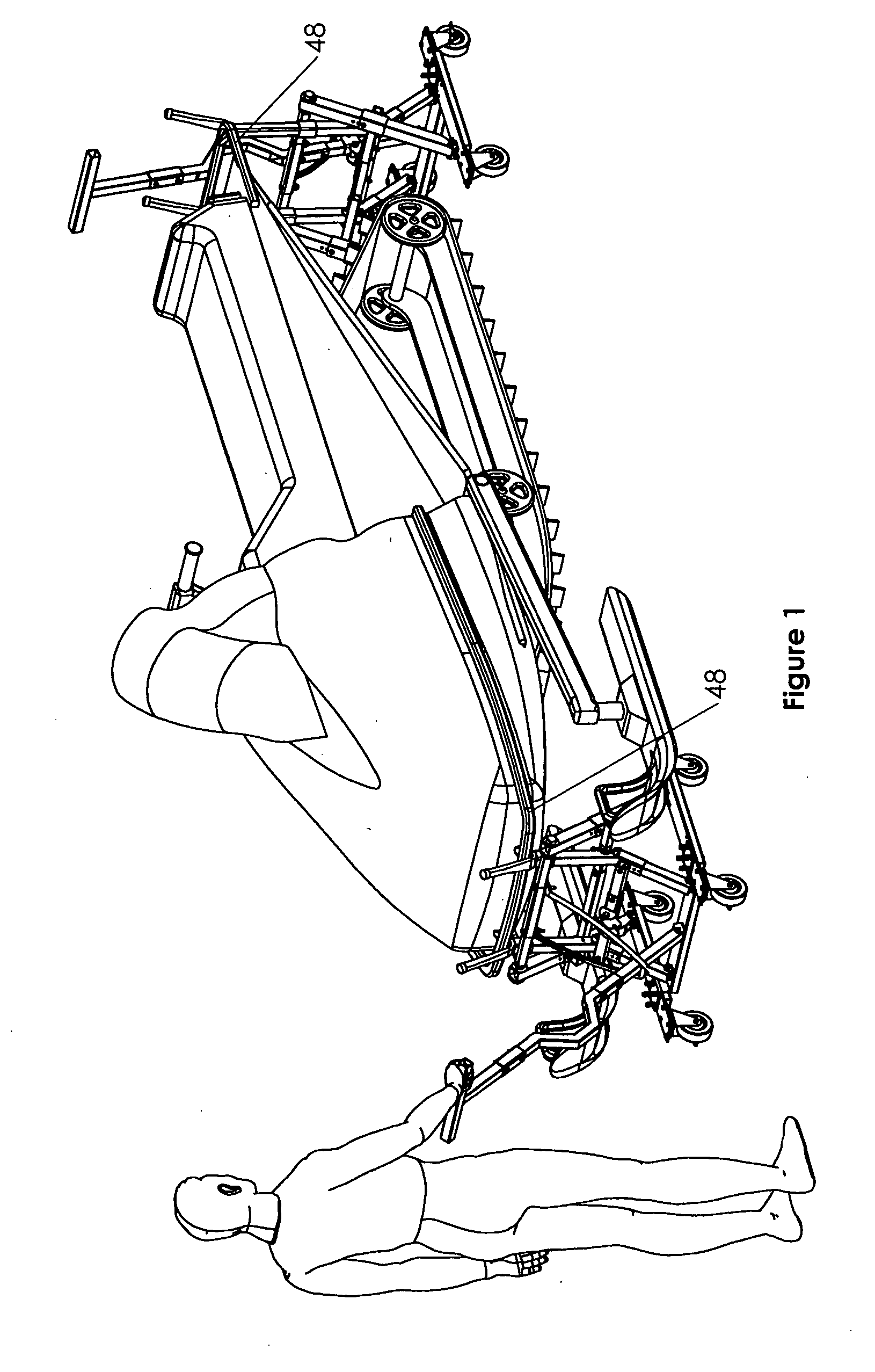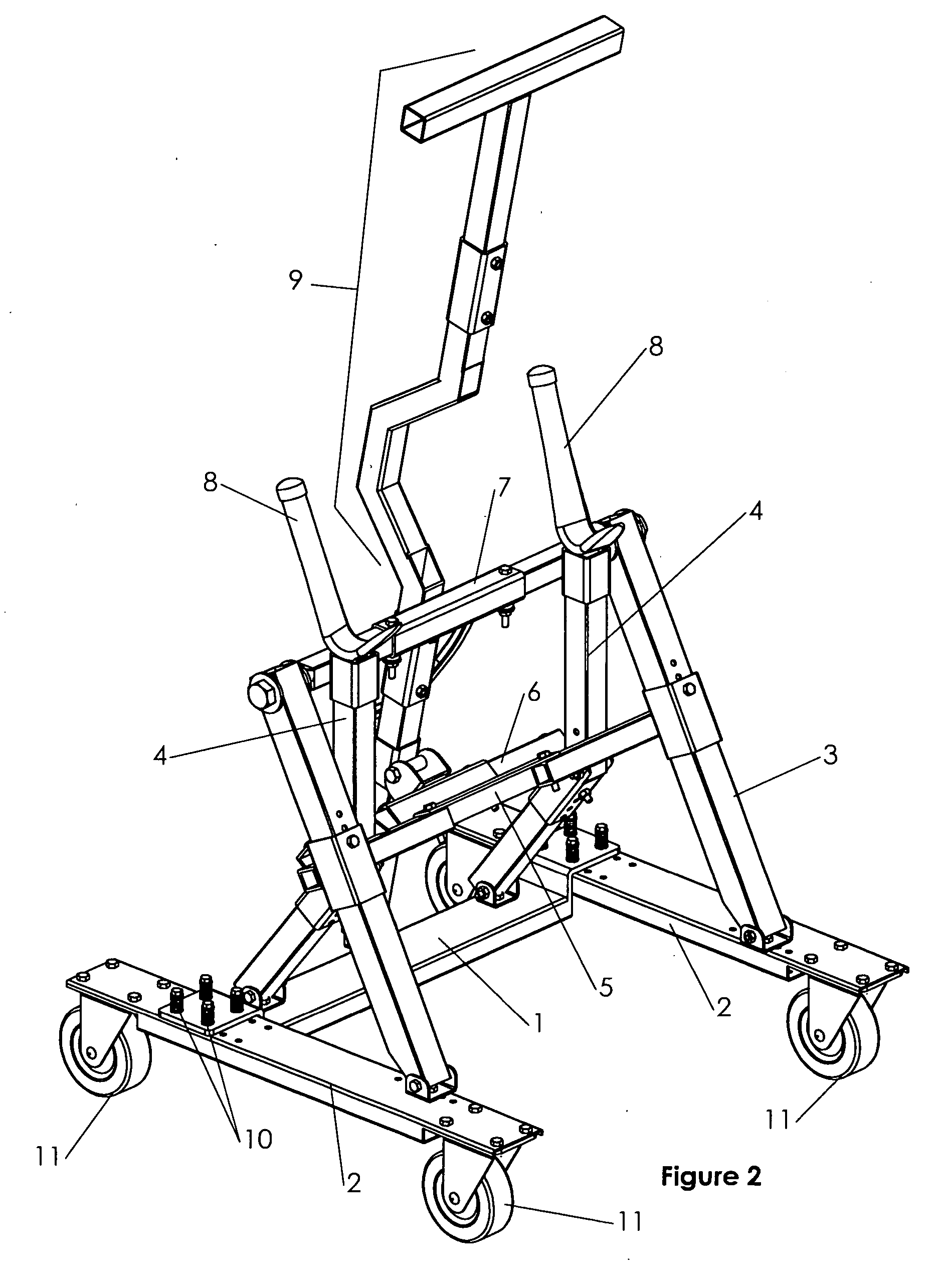Snowmobile lifting device
- Summary
- Abstract
- Description
- Claims
- Application Information
AI Technical Summary
Benefits of technology
Problems solved by technology
Method used
Image
Examples
Embodiment Construction
[0117]FIG. 1 is a perspective view of the lifting device of the present invention on the front and back end of a snowmobile. This figure illustrates the versatility of the present invention in that it can be used on the front and / or back end of the vehicle. The features of the present invention that make that versatility possible are illustrated in detail in the following figures.
[0118]FIG. 2 is a front perspective view of the lifting device of the present invention with the handle 9 in an upright position. This figure illustrates the main components of the present invention, which are the cross-bar 1, two wheel support members 2, two first legs, two second legs 4, a first lateral member 5, a second lateral member 6, a third lateral member 7, two cradle arms 8, and a handle 9. In the preferred embodiment, the cross-bar 1 is attached to the two wheel support members 2 by a plurality of spring bolts that provide flexibility to the unit. Underneath each wheel support member 2 are two ...
PUM
 Login to View More
Login to View More Abstract
Description
Claims
Application Information
 Login to View More
Login to View More - R&D
- Intellectual Property
- Life Sciences
- Materials
- Tech Scout
- Unparalleled Data Quality
- Higher Quality Content
- 60% Fewer Hallucinations
Browse by: Latest US Patents, China's latest patents, Technical Efficacy Thesaurus, Application Domain, Technology Topic, Popular Technical Reports.
© 2025 PatSnap. All rights reserved.Legal|Privacy policy|Modern Slavery Act Transparency Statement|Sitemap|About US| Contact US: help@patsnap.com



